Camera traps have been a key part of the conservation toolkit for decades. Remotely triggered video or still cameras allow researchers and managers to monitor cryptic species, survey populations, and support enforcement responses by documenting illegal activities. Increasingly, machine learning is being implemented to automate the processing of data generated by camera traps.
A recent study published showed that, despite being well-established and widely used tools in conservation, progress in the development of camera traps has plateaued since the emergence of the modern model in the mid-2000s, leaving users struggling with many of the same issues they faced a decade ago. That manufacturer ratings have not improved over time, despite technological advancements, demonstrates the need for a new generation of innovative conservation camera traps. Join this group and explore existing efforts, established needs, and what next-generation camera traps might look like - including the integration of AI for data processing through initiatives like Wildlife Insights and Wild Me.
Group Highlights:
Our past Tech Tutors seasons featured multiple episodes for experienced and new camera trappers. How Do I Repair My Camera Traps? featured WILDLABS members Laure Joanny, Alistair Stewart, and Rob Appleby and featured many troubleshooting and DIY resources for common issues.
For camera trap users looking to incorporate machine learning into the data analysis process, Sara Beery's How do I get started using machine learning for my camera traps? is an incredible resource discussing the user-friendly tool MegaDetector.
And for those who are new to camera trapping, Marcella Kelly's How do I choose the right camera trap(s) based on interests, goals, and species? will help you make important decisions based on factors like species, environment, power, durability, and more.
Finally, for an in-depth conversation on camera trap hardware and software, check out the Camera Traps Virtual Meetup featuring Sara Beery, Roland Kays, and Sam Seccombe.
And while you're here, be sure to stop by the camera trap community's collaborative troubleshooting data bank, where we're compiling common problems with the goal of creating a consistent place to exchange tips and tricks!
Header photo: ACEAA-Conservacion Amazonica
Wildlife Drones
Wildlife Drones has developed the world’s most innovative radio animal-tracking system using drones so you can track your radio-tagged animals like never before.

- 11 Resources
- 8 Discussions
- 32 Groups
- @sjmw71
- | she/her
Wildlife conservationist, writer, and photographer looking for a job in wildlife conservation! My "dream job" would involve adding a creative aspect (e.g., writing or photography) to promote the conservation of wildlife worldwide.
- 0 Resources
- 2 Discussions
- 3 Groups
Certified Associate Wildlife Biologist
M.S. Student



- 1 Resources
- 18 Discussions
- 7 Groups
Allen Institute for AI
Communications for EarthRanger and Skylight


- 7 Resources
- 5 Discussions
- 10 Groups
I'm a wildlife ecologist with interests in a range of technology.

- 0 Resources
- 20 Discussions
- 5 Groups
- 0 Resources
- 0 Discussions
- 2 Groups
Technologist and Visual storyteller focusing on social, conservations issues.


- 0 Resources
- 31 Discussions
- 16 Groups
Behavioural ecologist @CNRS in France - working mostly on ungulates in Europe and Africa

- 0 Resources
- 4 Discussions
- 4 Groups
- @aranFish
- | He/Him
CTO at SafetyNet Technologies
- 1 Resources
- 0 Discussions
- 5 Groups
- @nabilla.nuril
- | She/Her
Incoming student of UCL MSc Ecology and Data Science
- 0 Resources
- 0 Discussions
- 11 Groups
- @valeria
- | she/her
Studio Pixel
AI integration architect, AI product manager. I've built the front-end of this website 😁
- 0 Resources
- 3 Discussions
- 13 Groups
- @Harperinos
- | he/him
'Diploma of Conservation & Ecosystem Management' student at TAFE NSW Australia.
- 0 Resources
- 2 Discussions
- 6 Groups
Watch our interview with pioneering young Tanzanian vulture researcher Vainess Laizer! Her research investigating the breeding success of white-backed vultures in the western corridor of the Serengeti ecosystem using...
16 April 2024
Are you passionate about wildlife conservation and eager to contribute to meaningful research efforts? Lion Landscapes is seeking a dedicated and proactive Research Assistant to join their team.
11 April 2024
Article
You’re invited to the WILDLABS Variety Hour, a monthly event that connects you to conservation tech's most exciting projects, research, and ideas. We can't wait to bring you a whole new season of speakers and...
22 March 2024
The Smithsonian’s National Zoo and Conservation Biology Institute (SNZCBI) is seeking two postdoctoral fellows to engage more directly with identifying conservation metrics for vertebrate communities and populations.
14 March 2024
Catch up on the conservation tech discussions and events that happened during World Wildlife Day 2024!
7 March 2024
EcoAssist introduces a free African species identification model for camera trap images, capable of recognising 30 species.
5 March 2024
The primary focus of the research is to explore how red deer movements, space use, habitat selection and foraging behaviour change during the wolf recolonization process.
10 February 2024
Article
An update on @Alasdair and @adanger24's HWC project
11 January 2024
The Conservation Technology Laboratory within the Population Sustainability department is seeking two fellows for summer 2024.
9 January 2024
Outstanding chance for a motivated and ambitious individual to enhance their current project support skills by engaging with a diverse array of exciting projects in the field of biodiversity science.
11 December 2023
Article
Read our interview with Clementine Uwamahoro, African Parks’ Country Manager in Conservation Technology overlooking technology operations for both Akagera National Park and Nyungwe National Park.
29 November 2023
TagRanger® is a state-of-the-art wildlife finding, monitoring and tracking solution for research, conservation and environmental professionals. With superior configurability for logging data, reporting location and...
23 November 2023
May 2024
event
October 2024
October 2023
event
| Description | Activity | Replies | Groups | Updated |
|---|---|---|---|---|
| Got it. We should definitely be able to handle those images. That said, if you're just looking for counts, then I'd recommend running Megadetector which is an object detection... |
|
AI for Conservation, Camera Traps, Open Source Solutions, Software and Mobile Apps | 1 hour 52 minutes ago | |
| Hi everyone!@LashaO and @holmbergius from the Wild Me team at ConservationX Labs gave a superb talk at last month's Variety Hour,... |
|
AI for Conservation, Camera Traps | 13 hours 1 minute ago | |
| Hi everyone! @zhongqimiao was kind enough to join Variety Hour last month to talk more about Pytorch-Wildlife, so the recording might be of interest to folks in this thread. Catch... |
+5
|
AI for Conservation, Camera Traps, Open Source Solutions | 8 hours 38 minutes ago | |
| Can't beat Dan's list! I would just add that if you're interested in broader protected area management, platforms like EarthRanger and SMART are amazing, and can integrate... |
|
Data management and processing tools, Camera Traps, Conservation Tech Training and Education | 18 hours 17 minutes ago | |
| Saul Greenberg is a great guy! He has made a few very useful videos regarding the Timelapse/Megadetector integration:https://grouplab.cpsc.ucalgary.ca/grouplab/uploads/... |
+14
|
Camera Traps | 3 days 4 hours ago | |
| That sure sounds interesting! Thank you for your input, @Colin_Cook |
+13
|
Camera Traps, Drones | 1 week 3 days ago | |
| EcoAssist is an application designed to streamline the work of ecologists dealing with camera trap images. It’s an AI platform that... |
|
Software and Mobile Apps, AI for Conservation, Camera Traps | 2 weeks ago | |
| Hi @Alasdair Great to hear from you! Thanks for the comment and for those very useful links (very interesting). And for letting @Rob_Appleby know. I can't wait to hear... |
|
Emerging Tech, Camera Traps, Conservation Tech Training and Education | 2 weeks 4 days ago | |
| Hello everyone, I'm interested in gathering insights on how the behavior of different species impacts the development and efficacy of... |
|
Biologging, Acoustics, Camera Traps, eDNA & Genomics, Emerging Tech, Marine Conservation | 3 weeks 4 days ago | |
| Hi Andrew! Great to hear your friend, Scott working in Indonesia! I bet he is working on east region with lot of cool monitor lizards!I use Mavic 2 as well for my crocodile... |
|
Camera Traps | 1 month 2 weeks ago | |
| Ah yes. I didn’t notice that. Indeed it’s “near infrared”, 850nm lighting. |
|
Camera Traps, Marine Conservation | 1 month 3 weeks ago | |
| I've used AA rechargeable almost exclusively for many years now. I try to get rechargeables sourced from Japan (Panasonic Eneloop and Fujitsu), but have also used Eveready ... |
+18
|
Camera Traps | 1 month 3 weeks ago |
Camera Trap repairs - suggestions?
26 September 2022 2:15pm
5 December 2022 4:40pm
Thanks a lot for this, @Colin_Cook !
5 December 2022 4:41pm
Thanks a lot, @rcz133 ! I will certainly check your blog out (thanks heaps for pointing me in its direction).
New paper - Snapshot of the Atlantic Forest canopy: surveying arboreal mammals in a biodiversity hotspot
28 November 2022 4:11pm
Arboreal camera trapping confirms occurrence of the thin-spined porcupine and several critically endangered species in Caparaó National Park, Brazil.
Cameratrap flash overexposure
25 October 2022 11:04am
4 November 2022 5:27pm
I have not used Bushnell camera traps for quite a while, so this may not apply, but most makes have a flash intensity adjustment. If you have already tried that without success then opaque or translucent tape over the LEDs will do the same job.
4 November 2022 7:55pm
We have used cut pieces of translucent milk jug plastic to make a flash attenuator. Stack as many as you need to reduce exposure and tape on.
18 November 2022 7:09pm
Hi @LucyHReaserRe I've found a couple of layers or three of athletic/sports tape does the trick. This kind of thing:
Good luck,
Rob
Automatically tag animals, people and vehicles in cameratrap images and sort them in subfolders
17 November 2022 8:11pm
Camera Issues
2 October 2022 6:57pm
6 November 2022 7:05pm
Thank you so much! this was great information! I will look into the SD card. The SD cards were working fine, but they have stopped. If they were incompatible they wouldn't have worked at first, right?
As for batteries, I am confused. Our photographer at work said lithium doesn't do well in the weather and temperature changes. On here it sounds like you guys are saying lithium is better then alkaline (which the user manual also says to use), who do I listen to?? And how do I find lithium batteries that fit the cameras?
7 November 2022 7:39am
Hi Britnee,
Sometimes cards do just stop working/become incompatible. It could be a firmware glitch, but it's a bit like how a USB thumb drive can stop being recognised in a PC sometimes. I'd try a good quality card no larger than 32GB and with a class 10 rating, format it in the camera and then test it. You could also try formatting the cards that previously worked and trying them again.
Lithium batteries can indeed suffer in the cold (how cold is getting there?), but alkalines are, generally-speaking, a poorer choice all around. Are you using the best quality Duracell or Energizer alkalines? They might be up for the task. You could also consider a rechargeable sealed lead acid or gel battery. They suffer a little in really cold weather (all batteries do to some degree I think), but you could compensate by getting a higher-than-necessary capacity model (for example, double what you might need for a normal deployment). You mostly just need to make or order the correct lead to plug the battery into the camera. It should say somewhere in the manual what connector it uses, but it's usually something like a 1.7mm DC plug (e.g.
) but you'll have to double-check.
Cheers,
Rob
10 November 2022 11:55pm
Perfect, thank you so much!
Underwater Camera Trap Video Confirms 1,100-Mile (1800-km) Swim of Tagged Great White Shark
 WCS
WCS
25 October 2022 10:20am
New conservation tech articles from Mongabay
20 October 2022 7:45pm
Conservation Technology Intern (Vietnam)
 Meredith S. Palmer
Meredith S. Palmer
19 October 2022 9:22am
Feedback Wanted: Security Enclosures
19 December 2018 9:41am
15 July 2022 9:50pm
(Not sure how I missed this thread earlier).
I think different usage models lead to different security box enclosures. E.g:
1. High Risk Locations: You need the camera to be in a particular location, dictated by something other than optimal theft deterrence, for a long time. Or your site features very large animals (elephants). Here it seems like you pay the price (in weight) to make the thing as secure as possible (including on steel pole sunk into concrete!).
2. Low Risk/Exploratory: You have flexibility on where to place the camera, perhaps aimed at capturing specific animals or behavior, and can place the camera to try to make it less conspicuous to thieves. Also, you may be changing the location frequently. Finally, rules associated with the site may limit disturbance. Here, you'd like some protection, but you'd like to reduce weight and impact to the site.
We do a lot of (2). For this, we use camera-specific, relatively thin gauge, two-piece commercial steel enclosures -- e.g. from CamLockBox.com. These enclosures feature 1/4" holes in the back for securing to a tree; and methods for using a padlock and/or a cable lock to secure the camera in the box. These do a very good job protecting from most animals (bears, not elephants), and deter opportunistic homo sapiens.
13 October 2022 9:35am
Hi all,
Thank you for all your insights. I think @rcz133 has summed it up nicely: security enclosure design depends on the required usage.
I've tried to go for a design that I hope will work in most deployment scenarios. It should provide good mechanical protection from animals and if locked up properly should deter opportunistic theft as proper tools would be needed to get in.
Thanks to Cambridge Design Partnership, I now have a finished design and will be having some built for testing in the next few weeks.
The final specifications were:
- 16 gauge stainless steel.
- The enclosure is made of two parts that are easy to place together into a whole.
- The two enclosure parts fit together tightly with mechanical retention.
- The two enclosure parts are locked together by a padlock and/or a python lock.
- When using a python lock this also locks the camera into the enclosure.
- When locked the enclosure cannot be pried apart with a screwdriver or knife.
- The enclosure locking point positioning makes it difficult for the padlock to be bolt cropped.
- It is easy to place the camera into the enclosure so that it aligns with all lock points and apertures.
- The enclosure securely holds the camera in place with minimal horizontal movement using internal guides or fixtures.
- The bottom half of the enclosure with the camera inserted can be affixed to a tree with a strap or python lock before the top half of the enclosure is attached.
- The enclosure can be affixed to a tree using a strap, python lock or 1/4" mounting screws points.
- The enclosure allows water to easily exit through holes in the bottom and does not allow it too pool in the corners.
- The enclosure provides some cover above the lens aperture to provide sun screening and rain protection to the lens.
- The enclosure is powder coated in a matt colour scheme of dark green or brown for ease of camouflaging.
Once I've got the prototype enclosures I am keen to put them through their paces and do some testing to destruction to find their weaknesses.
If anyone has any tests they would like to see performed please let me know in the thread.
Thanks,
Sam
18 October 2022 2:54pm
This looks like a great spec. Looking forward to seeing final design.
Rainforest SigFox available for use
26 August 2022 6:09pm
26 September 2022 10:20pm
Hi Roland,
This is really amazing, great to hear about your set-up! I'm just wondering what the overall cost was to set up this system? Just thinking in terms of setting up something similar in other parks and what they should expect with regard to price. Would also be great to hear about the overall effort, e.g., hours/team members required. It would be great to have this act as a blueprint for other organizations/research stations wishing to deploy a similar system within their respective national parks/areas/etc.!
10 October 2022 8:33am
Hi Rolland,
Interested too, but why did you choose SigFox (a private network) rather than LoRa (open network)?
Sigfox currently has some financial troubles that, don't know what it will become in the long term.
18 October 2022 11:55am
Hi Everyone,
We chose sigfox becuase it seems to have better range and is plug-play, whereas LoRa requires more custom programming and updating. Getting a gateway cost us $2000 for a year's lease + deposit. We covered solar power. There are also some 'minigateways' you can purchase but I don't know how they compare in range (plan to test). So far we are happy with the performance, in that it has worked consistency with no outages (once we stabilized the power supply). I think the annual costs are about $10 per tag. We are working on a paper that will describe this in more detail. So far just using for tracking tags but also looking at a trap sensor.
cheers
Roland
MegaDetector on Edge Devices ??
19 February 2021 12:30am
30 August 2022 5:05am
Has anyone tried running the MegaDetector model through an optimizer like Amazon SageMaker Neo? It can reduce the overall memory footprint and possibly speed up inference on devices like Raspberry Pi and Jetson.
27 September 2022 10:19am
Great work Luke @sheneman! Having a relatively lightweight bit of hardware to run MDv5 on will open up opportunities for many more people. The upfront financial cost of a Jetson Nano is an order of magnitude less than a computer with a beefy GPU.
I haven't used any of the Nvidia edge devices yet. Do you think it would be possible for someone to make a disk image with MDv5 pre installed to lower the entry barrier of learning a new system, installing software, environments and packages etc.?
A difficulty I have seen for some projects is not having access to or not having internet bandwidth to utilize cloud compute services. If anyone needs to churn through camera trap image processing in a remote field station this may now be possible!
10 October 2022 12:27pm
Great work, unfortunately, I'm not familiar with programming but computer friendly enough to follow a good tutorial. I was wondering if you will share your findings?
Thanks for the work.
Multi-SD card reading hubs
2 October 2022 3:46am
4 October 2022 2:04am
Good point and nice link. My USB 3.0 (errr USB 3.1 Gen 1) portable HDD gets a real read speed of 133 MBps or ~1Gbps. The theoretical max is 5 Gbps but I think the speed is limited by processor used by the HDD/USB bridge controller. Most SD card readers may be more limited even if the SD card can handle higher data rates. That may be why it could be best to just use the multi-port device from SanDisk.
7 October 2022 4:35pm
Jamie,
I have been using a 12-card Lexar Professional Workflow system for several years to process images from 24 trail cameras. The system has 4 bays, with 3 card readers per bay. I wrote software to automatically download and rename the images using metadata read from the info banner burned into the images by the camera. (Alternatively, the software can use the Exif metadata attached to the image.) The software is described in a recent Wildlife Society Bulletin:
The software is available on github:
Don't be put off by "time-lapse recordings" - it works on still images also.
Regards,
Mike Hilton
8 October 2022 12:22am
Have a look at @tessa_rhinehart 's TechTutors on scaling up acoustic surveys. This is addressed at 11 min:
The "hexadecapus" is the hardware, but transfer is automated by naming the SDCards prior to use and scripts take care of the transfer. The scripts may be written up in the audiomoth guide but the kitzes lab have this on github (although it may be mac specific)
New paper: "Examining primate community occurrence patterns in agroforest landscapes using arboreal & terrestrial camera traps"
30 September 2022 8:03pm
Authors examine occurrence patterns of 7 primate species in agroforests in Guinea-Bissau. Arboreal camera traps detected all 7 species, terrestrial cameras detected 5. Heterogeneous spatial responses amongst primates across the agroforest landscape.
New paper: Battery-free wireless imaging of underwater environments
29 September 2022 3:22pm
'The low-power camera uses power from harvested acoustic energy and communicates colour images wirelessly via acoustic backscatter.' - https://twitter.com/NaturePortfolio/status/1574863768714100738?s=20&t=d…
Most interesting images / sightings 'caught on camera'
12 August 2022 2:50pm
26 August 2022 12:07pm
No - the trap was in their path and they just walked through it. I've now moved it to a place they can't go. The biggest threat to the moths is from pied currawongs. I schedule the trap so it shuts off at least two before sunrise to try to avoid them feasting on the larger insects.
29 August 2022 6:18pm
At first I was finding wings below the screen in the morning when I put our units out. So I put a game camera on the units to see what was feeding and when. I found three bird species, likely 3 individuals, quickly found it to be a good bird feeder- Song Sparrow (most frequent), House Wren, and this Tufted Titmouse. I changed my units to turn off about 1.5 hours before dawn and that worked! Nearly all the moths left the scene before the birds came to visit.
26 September 2022 10:43pm
My most prized camera trap image - a hummingbird caught on camera!
Camera trapping in the tropics
22 August 2022 4:44pm
26 August 2022 12:17pm
26 August 2022 6:15pm
Hi @laydent ,
I am just an occasional and non-professional user of a camera trap in Costa Rica. I have not experienced destruction of the camera trap by animals, so far. The trap never caught a monkey, but it did catch raccoons, an ocelot, pizotes and olingos. They all left the camera trap alone.
Rain would impact animal behavior obviously and possibly result in false positive triggering of the camera due to moving leaves and/or the rain itself. On the latter, one might try different sensitivity settings to see how your particular camera responds.
Camera traps are supposedly water tight ( and mine has been ), but in the long run seals may erode ( direct exposure to the sun may speed that up ). Also, I am wondering if water tight means rain-water tight, leaving the possibility of air humidity coming into the trap and cause corrosion.
Sorry, but I can not recommend anything to your third point.
26 September 2022 10:40pm
I would agree that primates probably aren't your biggest concern, animal-destroyer wise. At least in the Malagasy rainforests, lemurs are highly arboreal so if you have trail cams down low, the lemurs won't come down that far. Neotropical primates are probably similar in that respect (at least compared to African/Asian primates such as baboons & macaques which are more terrestrial). The bigger issue than animals messing up cameras has been people stealing or interfering with them, so trying to put hem off-trail/hidden, locked onto large trees has been important.
I second the Kays et al paper that @Rolandisimo mentioned above as a great reference & starting point! There is also this paper on camera trap study design, this one on camera trap placement bias and this one on strategic camera trap placement for evaluating different metrics.
In terms of wet vs dry season, you'll want to make sure that water doesn't accumulate where you're putting up the cameras such that they would potentially become submerged in a flash flood or river-rising/overflowing situation, but you probably already know that :).
There have been many papers that have looked at the effect of seasonality with camera trap data, but the majority of them are with regard to the actual species activity pattern differences across seasons rather than the effect of season on detection distance. You should consider what your species of interest's activity patterns are in different seasons and how this may impact detection probability. It may also be important in terms of strategically planning your sampling scheme. For example, the mouse & dwarf lemurs in Madagascar hibernate during the cold/dry season so it's not useful to sample for them during those months.
Conservation Tech Directory - new update!
29 August 2022 2:38pm
23 September 2022 5:26pm
Congrats on the milestone Carly and Gracie!
26 September 2022 10:07pm
Thanks so much!!
ISO Alternatives Wanted: Reconyx HF2X HyperFire 2
23 June 2020 5:46pm
30 June 2020 10:47am
Yes, contact me, please!
15 September 2022 9:35pm
Hello!
I am Daniele and I work with camera trapping research in the Mamirauá Institute for Sustainable Development (Amazonas state, Brazil).
We have used with Reconyx HyperFire since the beggining of our monitoring, but now we have a budget to buy new cameras and we are considering to purchase another models. I was looking for some information and saw your answer to this post. Could you please tell me that information on any "cameras that are similar to the Reconyx HyperFire, but that might be a bit less expensive"?
We are considering the Browning Patriot model.
Thank you,
Daniele
26 September 2022 8:10pm
There is this other WILDLABS discussion thread where tons of people provided input on their experiences with lots of different brands & models which may help.
You might also want to check out the Conservation Tech Directory and search 'camera trap' for a list of suppliers/companies & the price range of their products.
MIT engineers build a battery-free, wireless underwater camera
26 September 2022 2:59pm
Avian nest box monitoring
14 September 2022 2:30pm
14 September 2022 3:08pm
Maybe this is a starting point. Any idea if this product would work inside the box. Kestrel DROP D3 Wireless Temperature, Humidity & Pressure Data Logger https://amzn.eu/d/5VdQwtA
23 September 2022 12:34pm
I'd be interested in any camera monitoring setups that can be used inside a nest box. Most camera traps are too bulky for this purpose. All the devices I've looked at either need a wired connection or a wifi network to transmit images. I want one that can store all info to an SD card and preferably be solar powered. Obviously infrared or starlight sensitivity. Sound recording would be a bonus for some bird monitoring I want to do.
23 September 2022 1:16pm
Done lots of this over the years and it depends on the species really. If you want incubation behaviour and hence success or otherwise using temperature then the Thermocron IButton DS1921G is perfect. The new Blue Maestro is an option I became aware of this year but I haven't tested at scale.
In terms of cameras and endoscopes I've tailored many off the shelf products and built a few from scratch. When I get chance I'll have a look around and see what is still available.
Counting insect density automatically with Intel RealSense D455?
31 August 2022 3:54pm
23 September 2022 12:06pm
Might be good to add this to the 'Automated Camera Traps for Insects' group
Senior Conservation Technology Expert Position (Consultancy) with the Global Wildlife Program
22 September 2022 5:35pm
New paper: Environmental DNA as a management tool for tracking artificial waterhole use in savanna ecosystems
19 September 2022 2:43pm
From Max Farrell on Twitter: "New paper comparing eDNA and camera traps for tracking waterhole visitation. We took pictures, analyzed DNA in drinking water, built a reference library for vertebrates in the Kruger, and asked how well these tools work (and why!)"
CamTrap Ecology meets AI conference
14 September 2022 4:47pm
CFP - transnational biodiversity monitoring (from European Biodiversity Partnership)
14 September 2022 1:42pm
Postdoc: Interpretable ML for species-based image classification
1 September 2022 9:34pm
River Otter Camera Traps
21 August 2022 10:02pm
27 August 2022 2:00am
I am a Camera Trapper hobbyist. I have gotten some nice otter videos. You can see them on my you tube channel pheekin trail camera videos. There is nothing on the channel but 15 second videos of animals that I have filmed. I have several otter videos on the channel that I think are pretty good. I found a spot where beaver, mink, and otters were moving between a medium size river and a man made wetland. I set my cameras on the trails. The secret was getting the camera really low on the trees near the trails. If you look at the otter videos the camera is pointed toward the river, just offset of the trail. When placed at 90 degrees to the trail the otters moved too fast for a good video. When offset but looking toward the river, the otters see the camera but most animals still proceeded down the trail toward the wetland. It helped that the river bank was steep and when they got to the top they triggered the camera at the same time they saw the camera. The camera was a true dark flash so they see the camera has and object but do not see the flash. One warning when cameras are set low on a tree the camera really has to be locked in tight. Raccoon and coyote will investigate the camera and some will knock it. Coyotes knocked out of position three of the 4 cameras that I set. Thankfully I got the otters before they knocked the cameras. Hope this helps
28 August 2022 6:15pm
I will take a look and reach out if I have any questions. Thank you so much!
28 August 2022 6:15pm
Good information, Thank you!
Conservation Technology Research Internship
26 August 2022 4:58pm
Postdoc in the application of AI for wildlife conservation & management
26 August 2022 11:47am



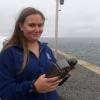











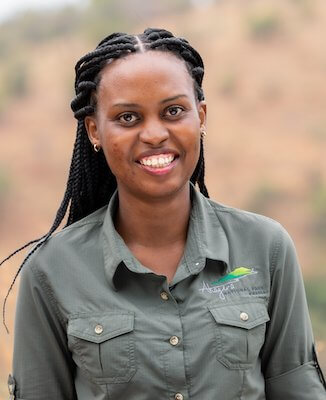





























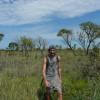



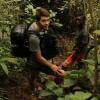






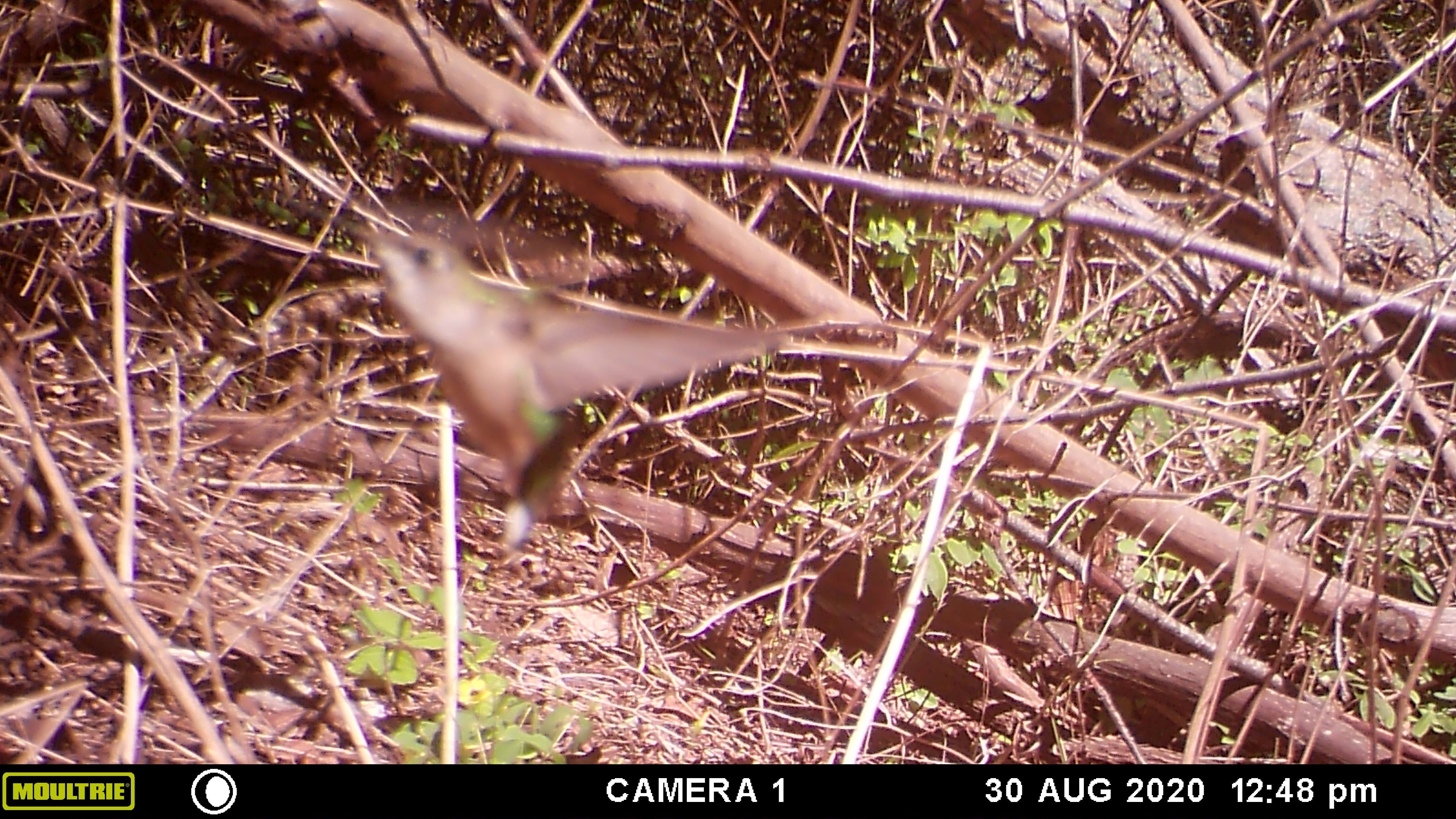



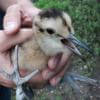




5 December 2022 4:39pm
Thanks a million, @Rob_Appleby @Freaklabs @StephODonnell ! Apologies for the delay on my end - I was busy shifting to (and settling into life on) Príncipe island. A live trouble-shooting session would be very much appreciated, thank you! Given that it is December, and I suspect everyone will be off for holidays quite soon, would sometime in January work? The week of the 9th? Or possibly the week after, depending on when everybody is back from hols. In the meantime, I will check what we have on our field site (for future reference), as well as if we have a multimeter in our Cambridge office.
Many thanks again, and I look forward to hearing from you on when is a good time in January for this.
Kind regards,
Asiem